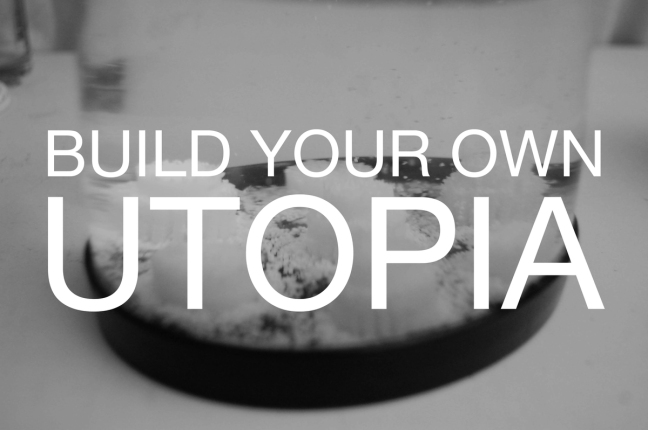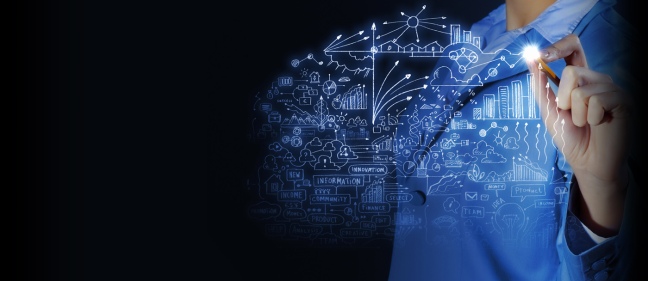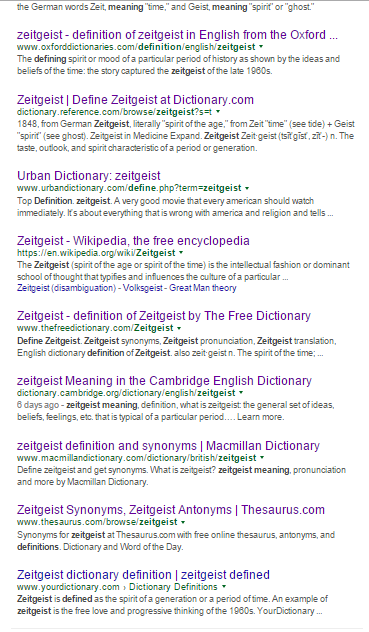Exercise 2: Utopias and Manifestos
- Process
What is a Manifesto?
It is a written statement that describes the policies, goals, and opinions of a person or group. It is a written statement to publicly declare your intentions, motives, or beliefs and originates from the Latin word manifestus — to manifest, to clearly reveal, to make real. Writing a manifesto can help you clarify what you believe and what type of contribution you want to make in the world(Redding, 2010).
The word manifesto comes from the Latin manifestus meaning literally that may be laid hold of by the hand. Manus means hand and Festus comes from fendo: to dash against. Eventually it came to stand for a document, signed by the master of a vessel at the place of lading which was to be exhibited at the custom’s house. The manifesto contained a description of the ship and her cargo, the destination of the ship and the goods. Accordingly the word manifest means To show plainly, to display, or Not hidden, clear to view; easily understood. The word manifesto is therefore also used for a public declaration of intent by a sovereign or government (Voorthuis.net, 2016).
Utopian Ideals of 5 Manifestos
Futurism
Futurism originated in Italy in 1909 as an avant-garde movement that glorified technology, modernity, and even war. In their artwork, the Futurists strove to capture the speed and ‘force lines’ of motion and progress. This ideology pushed their work towards abstraction, and Futurism helped fuel the invention of Cubism (Smashingmagazine.com, 2016).
Dada
To the Dadaists, logic was a pestilence. They believed that logic had led to a culturally and morally deficient society. These artists were so appalled by World War I that they violently rejected existing notions of culture, aesthetics, and even reason. Their work was anti-war, anti-bourgeois, and anti-conformity. Freedom was the goal; Dada sought to liberate a variety of media and its meanings from the shackles of the past. The Dadaists’ most powerful tools were biting satire and brazen provocation. Their ideology laid the foundation for Surrealism and their delight in anarchy makes them a cultural precursor to the punk movement that was born half a century later(Smashingmagazine.com, 2016).
Surrealism
Surrealism is a weird dream. This dream can be a vivid exploration of personal identity (Frida Kahlo) or a startling hallucination fraught with Freudian fears (Salvador Dalí). Oh, and there’s often weird fruit involved (think pomegranates or an orange in a doorway).
In short, Surrealism sought to explore the unconcious in order to break creative ground. Their artwork rejects rational thought in favor of absurdity and illogicality, suggesting that these qualities may offer more accurate representations of modern life’s disturbing complexities(Smashingmagazine.com, 2016).
Art Nouveau
Decorative style of the late 19th and early 20th centuries that flourished principally in Europe and the U.S., Although it influenced painting and sculpture, its chief manifestations were in architecture and the decorative and graphic arts. It is characterized by sinuous, asymmetrical lines based on organic forms (Anon, 2016).
Arts and crafts
Informal movement in architecture and the decorative arts that championed the unity of the arts, the experience of the individual craftsperson, and the qualities of materials and construction in the work itself(Anon, 2016).
Generations Explored
A generation is a group of people born around the same time and raised around the same place. People in this “birth cohort” exhibit similar characteristics, preferences, and values over their lifetimes.
Currently, five generations make up our society. Each of those five generations has an active role in the marketplace. Depending on the specific workplace, the workforce includes four to five generations. Here are the birth years for each generation:
- iGen, Gen Z or Centennials: Born 1996 and later
- Millennials or Gen Y: Born 1977 to 1995
- Generation X: Born 1965 to 1976
- Baby Boomers: Born 1946 to 1964
- Traditionalists or Silent Generation: Born 1945 and before
Generation- iGen (also known as Generation Z and the Centennials)
This is the most recent generation, while we don’t know much about Gen Z yet…we know a lot about the environment they are growing up in. This highly diverse environment will make the grade schools of the next generation the most diverse ever. Higher levels of technology will make significant inroads in academics allowing for customized instruction, data mining of student histories to enable pinpoint diagnostics and remediation or accelerated achievement opportunities (Generations X, 2016).
Gen Z kids will grow up with a highly sophisticated media and computer environment and will be more Internet savvy and expert than their Gen Y forerunners(Generations X, 2016).
As Gen Z members are still largely kids and adolescents, many of their adult characteristics are yet to be vetted. Early indications are that they are increasingly self-aware, self-reliant, innovative and goal-oriented. They also appear to be more pragmatic than their Millennial predecessors, but we’ll have to wait and see if that plays out as they become employees, consumers, investors and voters (GEN HQ, 2016).
One key difference from Millennials: Most members of iGen or Gen Z don’t remember a time before social media. As a result, they tend to live much more of their entire lives—from interacting with friends and family to making major purchases—online and via their smartphones. This could have profound implications for everything from their relationships and how they learn to virtual reality training and problem-solving (GEN HQ, 2016).
What are three things about Gen Z and iGen that most people don’t know?
- Gen Z is highly educated.
It’s likely that a larger percentage of Gen Z will attend and graduate from college than any previous generation, including the Millennials. Gen Z is also adept at web-based research and often self-educates with online sources such as YouTube and Pinterest. They can learn complex things like how to upgrade your computer’s operating system the same way they can learn how to bake a vegan apple pie: one video at a time. They still possess general knowledge about traditional research methods, but they have come of age placing a priority on how fast you can find the right information rather than on whether or not you know the right information (GEN HQ, 2016).
- Gen Z wants to make a difference in the world.
A large portion of the generation would prefer to have a job that makes a positive impact in some way, and a large portion of them volunteer. However, it’s unclear what impact school-based volunteer requirements are having on volunteer rates among iGen. What we do know is that an overwhelming majority of iGen and Gen Z are eco-conscious and concerned about humanity’s impact on the environment. We also know that iGen wants to make a decent living with a stable employer. This practical aspect of financial prudence and wanting to help people could lead to longer-term differentiation from Millennials (GEN HQ, 2016).
- Gen Z is more diverse than Millennials.
This is a big deal and is often overlooked. The tremendous diversity that Gen Z brings as employees, consumers and entrepreneurs will have a profound impact across generations and cultures. Brands and employers will have to learn how to see the world through the diverse eyes of Gen Z if they want to win their loyalty (GEN HQ, 2016).
Contemporary Video that I consider to represent my generation Z
I chose two videos, the first one is called Introduction to Generation Z, which is a short clip describing what elders perceive us to be, verses how we truly are and how we think in reality which is interesting because it seems to be two seemingly different things. The second video I chose was Stressed Out- by Twenty One Pilots because it is a very contemporary song and they are rapping which is a very big genre amongst teenagers today and what we enjoy to listen to, as well as the style of the whole video is very modern and composed in a creative abstract way. The teenage boys in the video depict what most teenage boys act like now and how we all socialise together as well as they have tattoos and wear beanies and a modern style of clothing. The words also describe thoughts we have because we are so dedicated and stressed out in planning a good future for ourselves that we wish sometimes we could turn back time where our mothers still sang us to sleep and we had no stress and worries of planning a proper future to make money and make a living.
Information from Facebook reflecting current generations hopes, interests and beliefs, likes and dislikes, values and what they reject.












The nature of contemporary utopia
We all want to live in a world of freedom, wealth (or have enough money to live a decent life) and happiness. Religion is no longer the factor restricting us from what we want to do. We want to advance in life to learn more about what is out there and how we got here. We are so technologically advanced and this is too increasing rapidly which is making most people in today’s generation want to escape from social media and live peacefully and freely.
- Product
My manifesto representing our Utopian Ideals as a group
I want to live a spiritual life, close to God and doing what I enjoy to help others. In today’s society, the current and latest generation Z, thrive on technology and advancements to make life easier and more interesting, entertaining and engaging but I think deep inside us all we want to achieve that natural state of freedom and self-expression that is not over social media, because everything and everyone are portrayed and perceived differently through it. We want to strive for success and creating new trends and ideas as graphic designers and make a difference that will benefit the world. We are moving away from the strict code that religion bounds us by as we have a corrupt government that controls us and no longer strict rules or punishments which thus creates a world full of crime, lies and corruption, even though most of us are all part of it in some ways we all desire peace and happiness, yet we create violence and we keep our voices to ourselves. We can no longer conform as we all want to be in some way different to be noticed, yet many become fake and display themselves as something they are not. We all have our own ideas of what the Utopian/ perfect world is in our heads yet when we reach it, it becomes boring and we constantly want to find ways of improving or bettering ourselves and we are never satisfied, where only in the end do we realize that most of us worked our entire lives to just make a living, that is why I say your Utopian world should be your career, and you should choose one that makes you happy because you are doing it 90% of your life. If you want success, don’t aim for it, just do what you are passionate about and believe in it and the rest will come naturally. You never know when your last day will be.
Reference list
Voorthuis.net. (2016). [online] Available at: http://www.voorthuis.net/Snake/48a%20manifesto.htm [Accessed 6 Sep. 2016].
5 Historical Manifestos
Futurism
Dada
Surrealism
Smashingmagazine.com. (2016). Art Manifestos and Their Applications in Contemporary Design – Smashing Magazine. [online] Available at: https://www.smashingmagazine.com/2010/02/art-manifestos-and-their-applications-in-contemporary-design/ [Accessed 6 Sep. 2016].
Art Nouveau
Arts and crafts
Anon, (2016). [online] Available at: http://www.moma.org/learn/moma_learning/glossary [Accessed 6 Sep. 2016].
Redding, D. (2010). Art Manifestos and Their Applications in Contemporary Design – Smashing Magazine. [online] Smashing Magazine. Available at: https://www.smashingmagazine.com/2010/02/art-manifestos-and-their-applications-in-contemporary-design/ [Accessed 11 Jul. 2016].
Generations X, Z. (2016). Generations X,Y, Z and the Others. [online] WJSchroer. Available at: http://socialmarketing.org/archives/generations-xy-z-and-the-others/ [Accessed 11 Jul. 2016].
GEN HQ. (2016). Learn About Gen Z (aka Generation Z) on GEN HQ. [online] Available at: http://genhq.com/igen-gen-z-generation-z-centennials-info/ [Accessed 6 Sep. 2016].

 (a) The influence of technology and science on our lives
(a) The influence of technology and science on our lives

 1850s art
1850s art Contemporary art
Contemporary art 1850s photography
1850s photography Contemporary photography
Contemporary photography 1850s fashion
1850s fashion Contemporary fashion
Contemporary fashion


